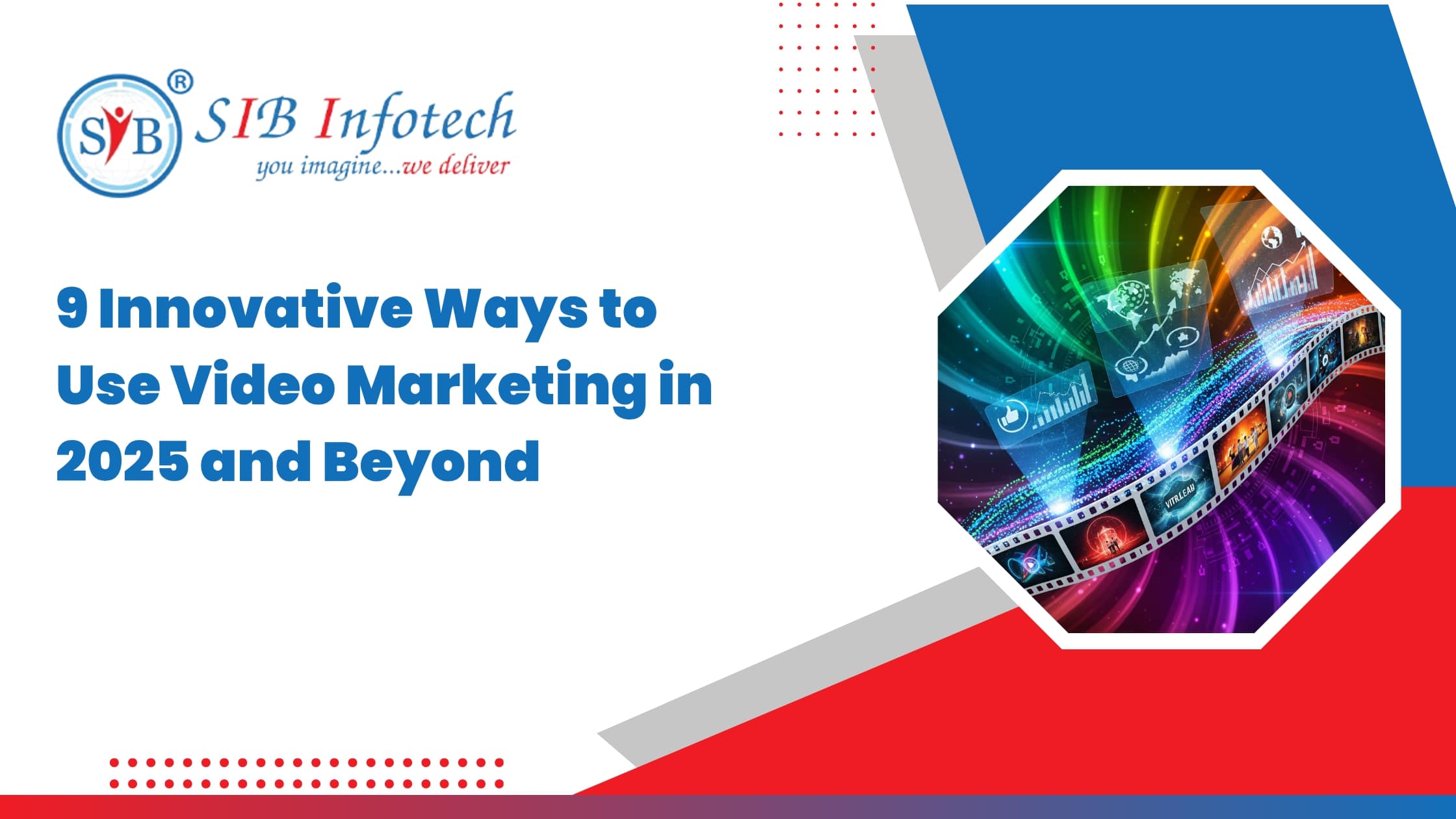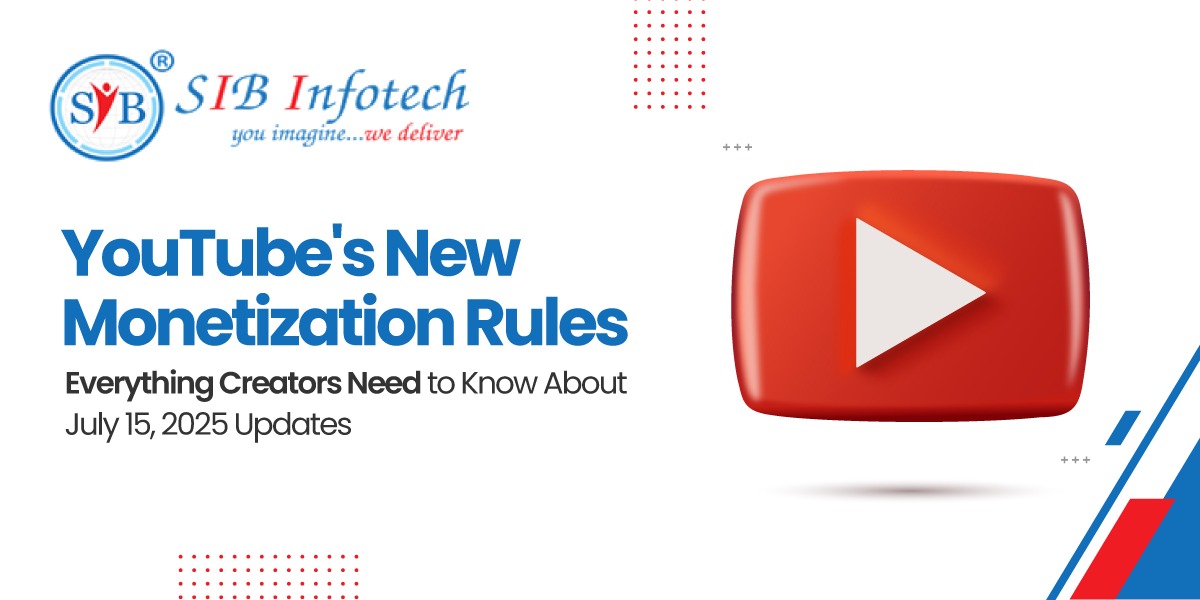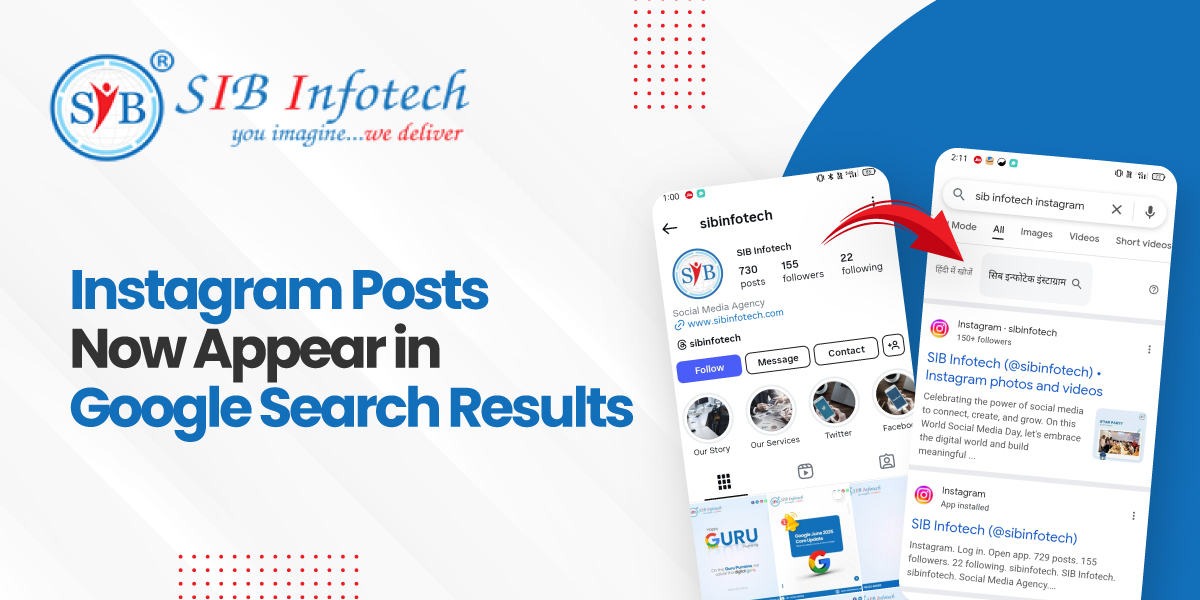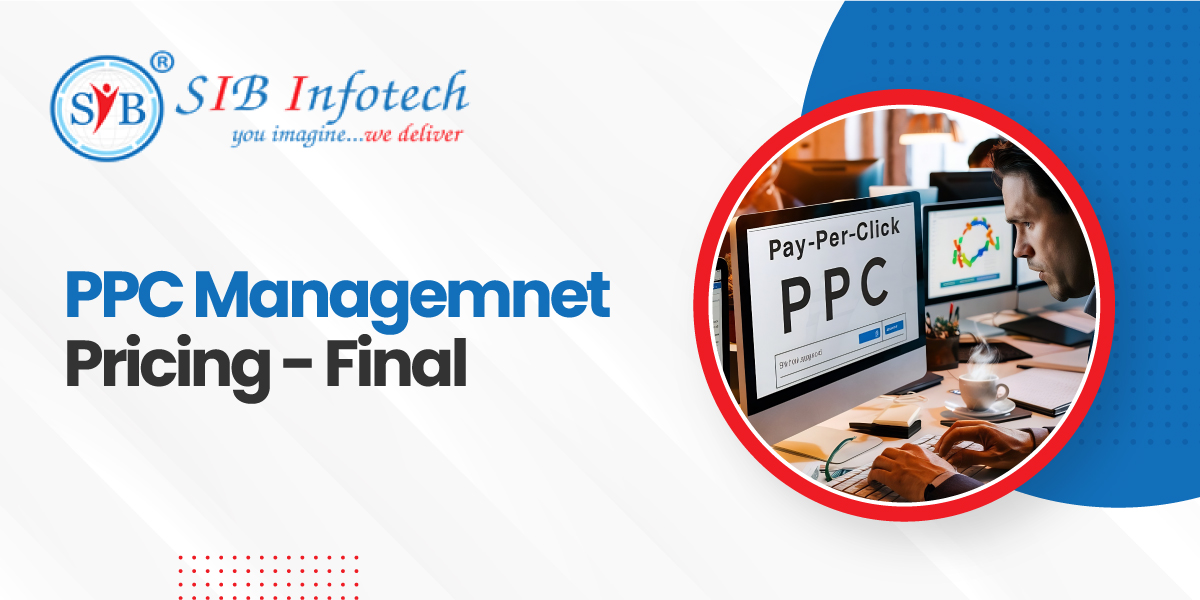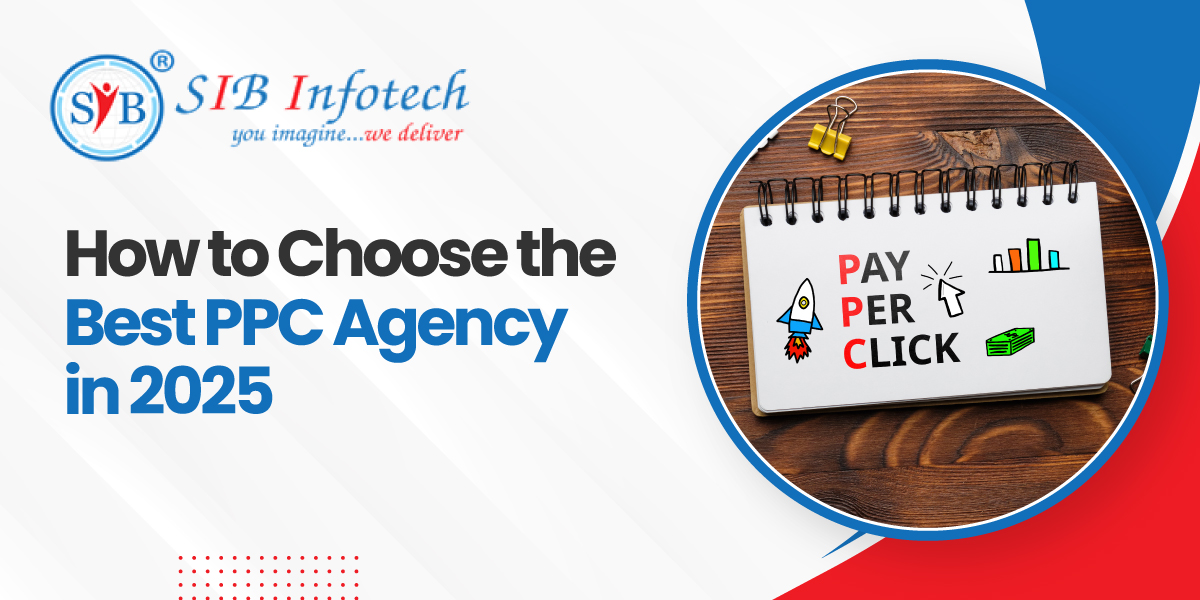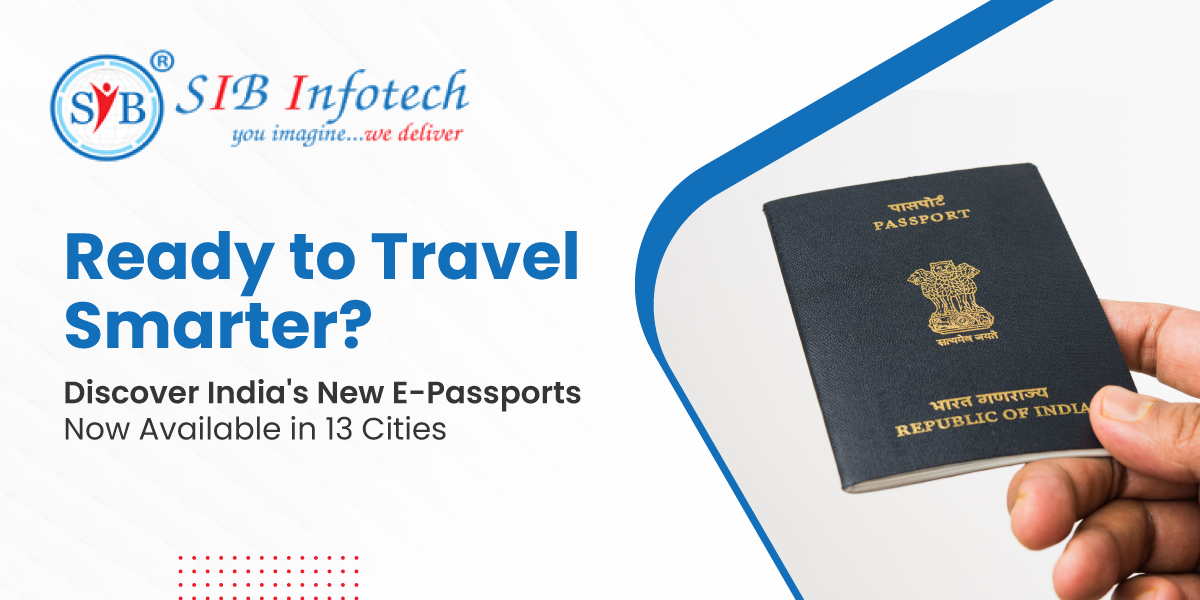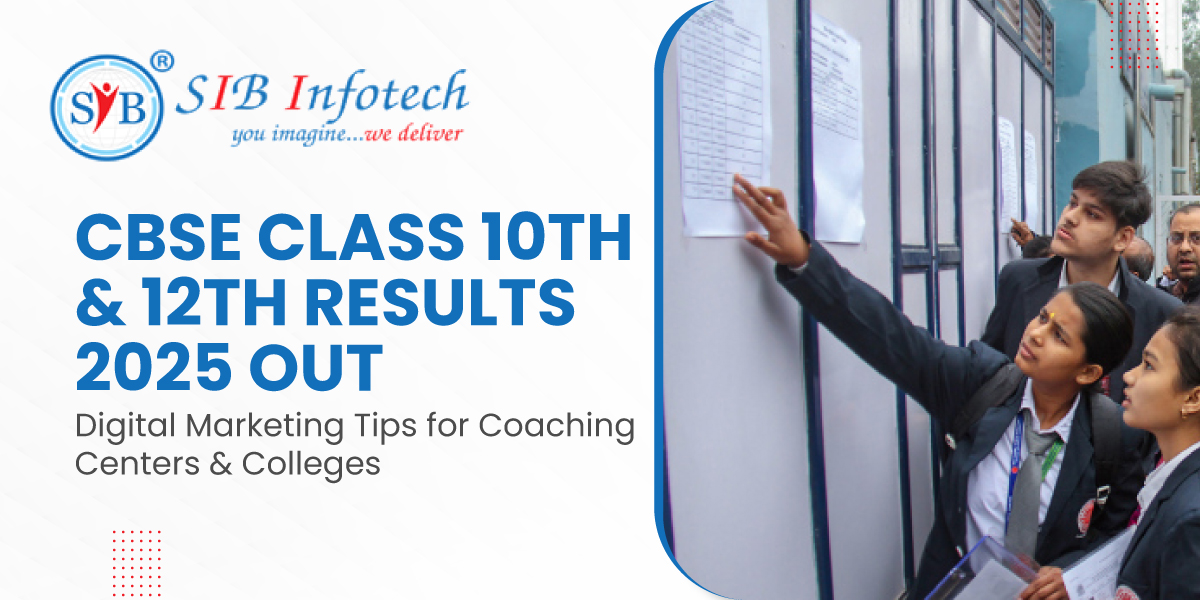9 Innovative Ways to Leverage Video Marketing for 2025 and Beyond
- Jul 02, 2025
How to Get on AI Overview: Complete SEO Optimization Guide for 2025
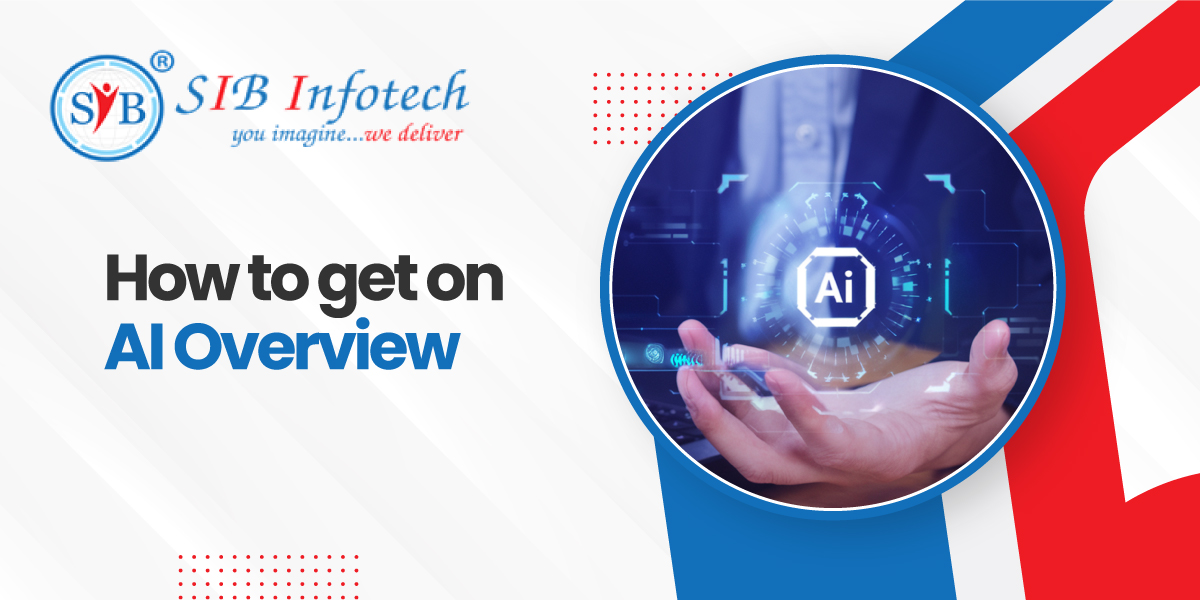
About The Author
Quick Start: How to Get on AI Overview This Week
Need Immediate Results? Follow These 4 Proven Steps
Step 1 (15 minutes): AI Overview Readiness Audit
- Check if your top pages appear in current AI Overview results
- Identify content gaps using this AI optimization checklist
- Analyze competitor AI Overview citations
Step 2 (30 minutes): Write Content for AI Overview
- Add FAQ sections with direct, complete answers
- Structure content with clear H2/H3 headings
- Include People Also Ask questions naturally
Step 3 (45 minutes): Technical AI Optimization
- Implement schema markup for better AI understanding
- Optimize for Core Web Vitals and mobile performance
- Add author authority signals
Step 4 (10 minutes): Multi-Platform Monitoring
- Set up Google Search Console AI Overview tracking
- Monitor citations across ChatGPT, Claude, and Perplexity
- Track brand mentions in AI-generated responses
Visual: AI optimization workflow showing the 4-step process with expected timeframes
How to Get Featured in AI Overview: The Complete Strategy
What is AI Overview and How Does It Select Content?
AI Overview is Google's AI-powered feature that generates comprehensive answers by analyzing multiple authoritative web sources. AI Overviews appeared in 6.49% of queries in January 2025, 7.64% in February, and rose to 13.14% in March—signaling rapid integration into search results.
The AI Overview Selection Process:
- Query Analysis: Google's Gemini models determine if AI-generated responses add value
- Source Evaluation: Content with strong E-A-T signals and structured formatting is prioritized
- Content Synthesis: Information from multiple sources is combined into cited responses
- Quality Validation: AI cross-checks facts before displaying results
[Visual: Flowchart showing Google's AI Overview content selection algorithm]
How to Get Featured in AI Overview: 7 Proven Strategies
1. Optimize for Search Intent, Not Just Keywords
Only 5.4% of Google AI Overviews contained an exact query match. Intent-based content ranks better.
Example:
- Poor: "AI Overview SEO keywords ranking"
- Good: "How to identify which keywords trigger AI Overview responses and optimize content accordingly"
2. Structure Content for AI Readability
Recommended Layout:
- Question as H2
- Direct Answer
- Supporting Context
- Examples
- Next Steps
Best Practices: Begin each section with an answer, use lists, tables, and glossary boxes.
3. Build Multi-Source Authority
Google's AI favors in-depth content with:
- Expert quotes and citations
- Statistics with sources
- Multiple views on complex topics
- Up-to-date research
4. Optimize for Featured Snippets + AI Overview
Content that appears in snippets is more likely to be included in AI Overviews.
Example Snippet Block:
<h2>How long does AI optimization take?</h2>
AI optimization typically takes 30–90 days to show results depending on domain authority and content quality. Most sites see inclusion within 4–6 weeks.
5. Use Long-Tail Question Keywords
Queries with 4+ words trigger AI Overviews 60.85% of the time. Target questions like:
- "How to write content that gets featured in AI Overview"
- "What makes Google choose content for AI Overview responses"
- "How to optimize existing content for AI citations"
6. Build Topic Clusters Around AI Content
Example Cluster: "AI Overview Optimization"
- Pillar: Ultimate guide to AI Overview
- Cluster Pages: Technical setup, industry strategies, examples, tools
7. Keep Content Fresh and Updated
Update your content regularly for maximum AI visibility.
- Monthly: Update data and screenshots
- Quarterly: Add new trends and sections
- Annually: Full content audit and refresh
How to Write Content for AI Overview Success
The AI-First Writing Framework
1. Lead with Direct Answers
Every major section should begin with a complete, standalone answer that could function as an AI response.
Example:
Q: How to prompt AI Overview?
A: To prompt AI Overview, structure your search queries as specific questions (4+ words), use natural language, and include context about your intent. AI Overview responds best to informational queries like "how to," "what is," and "best practices for" rather than short, generic keywords.
2. Use the AIDA Structure for AI Optimization
- Answer: Direct response to the query
- Information: Supporting context and details
- Data: Statistics, examples, and proof points
- Action: Clear next steps or implementation guidance
3. Optimize Content Length and Depth
AI Overview prefers content that demonstrates deep understanding while maintaining clarity. Target:
- Section Length: 150–300 words per major point
- Total Depth: Comprehensive coverage without fluff
- Reading Level: 10th-grade comprehension for accessibility
- Expert Depth: Industry-specific insights and advanced strategies
Content Types That Dominate AI Overview
How-to Guides and Process Content
Winning Structure:
- How to [Achieve Specific Goal]
- What You'll Need (tools, prerequisites)
- Step 1: Foundation Work (with expected outcomes)
- Step 2: Implementation (with troubleshooting)
- Step 3: Optimization (with success metrics)
- Common Issues and Solutions
- Advanced Tips and Next Steps
Comparison and Decision-Making Content
AI Overview Citation Format:
- Best [Solution] for [Specific Use Case]
- Quick Recommendation (winner + reasoning)
- Detailed Comparison (features, pros/cons)
- Use Case Scenarios (when to choose what)
- Implementation Considerations
- Final Verdict with Supporting Data
Definition and Explanation Content
Structured Definition Approach:
- Primary Definition: Clear, concise explanation
- Context and Background: Why it matters
- Real-World Applications: How it's used
- Related Concepts: Connected ideas and terms
- Common Misconceptions: What it's NOT
Multi-Platform AI Optimization Strategy
Optimizing for Google AI Overview and AI Mode
Google AI Mode Optimization (May 2025 Launch)
- Conversational Content: Write as if answering follow-up questions
- Multi-Modal Elements: Include images, videos, and interactive content
- Deep Research Format: Comprehensive coverage with multiple perspectives
- Citation-Ready Structure: Make your content easy to reference and link
Google Gemini 2.5 Integration
Starting this week, Google Search integrates a custom Gemini 2.5 version into AI Mode and Overviews. To optimize:
- Provide context-rich explanations
- Use natural language patterns
- Include multiple knowledge perspectives
- Maintain factual accuracy with citations
Optimizing for ChatGPT and Other LLMs
ChatGPT Strategy
- Comprehensive topic coverage
- Clear information hierarchy
- Credible source attribution
- Balanced perspectives on complex issues
Claude AI Strategy
- Detailed, contextual explanations
- Step-by-step instructions
- Real-world examples
- Error handling and misconceptions covered
Perplexity AI Strategy
- Fact-dense content and current data
- Cross-referenced claims from reliable sources
- Emphasis on technical accuracy
Universal AI Optimization Principles
Authority Signals
- Author credentials and professional experience
- Recent publication dates
- Reputable affiliations
Structural Clarity
- Logical headings (H2, H3)
- Scannable sections and topic transitions
- Consistent formatting and tone
Information Quality
- Factual accuracy with references
- Comprehensive coverage of each topic
- Actionable takeaways and insights
AI Citation and Authority Building
Understanding AI Citation Dynamics
Being cited in Google's AI Overview reflects trust in your content. To earn that trust, your material must display clear authority, depth, and value across multiple criteria.
Citation-Worthy Content Characteristics
- Original Research: Share new data, surveys, or internal studies.
- Expert Insights: Leverage professional experience and case results.
- Comprehensive Coverage: Deliver complete, in-depth content.
- Current Information: Update frequently with current trends and stats.
The CITE Framework for AI Authority
I – Information Depth
- Cover more detail than competitors
- Explain implementation clearly
- Address exceptions, edge cases, and practical steps
T – Trustworthy Sources
- Use trusted sources like .gov, .edu, and industry journals
- Link to recent studies and expert-authored content
- Share proprietary or first-hand data where possible
E – Expert Analysis
- Interpret and explain key insights
- Recommend strategy and actionable next steps
- Discuss implications and industry trends
Building Cross-Platform Citation Networks
Internal Citation Strategy
- Create deep content hubs with authoritative value
- Link pages using natural, contextual anchors
- Focus on building thematic expertise
External Citation Opportunities
- Write for reputable blogs and publications
- Contribute to expert panels, interviews, and roundups
- Speak at conferences or online industry events
- Collaborate with influencers and thought leaders
Technical Implementation Guide
Core Web Vitals for AI Optimization
- LCP: < 2.5s
- FID: < 100ms
- CLS: < 0.1
- TTFB: < 600ms
️ Technical SEO Checklist
- Responsive mobile-first design
- SSL via HTTPS
- XML sitemap with updated structure
- robots.txt optimized for AI crawlers
- Clear and readable URLs
- Proper alt text for images
- Strategic internal linking
- Canonical tags in place
Content Delivery Optimization
CDN Tips:
- Use global edge locations
- Enable AI-friendly bot crawling
- Apply smart caching
- Track crawl behavior and budget
SSR Implementation:
- Make JavaScript crawlable
- Ensure meta tags render properly
- Test for compatibility across AI bots
- Verify with Google’s Rich Results tool
Measuring AI Overview Success
Key Performance Indicators (KPIs)
Primary AI Overview Metrics
- AI Overview Appearances: Frequency of citations across platforms
- Citation Quality Score: Authority of citing AI systems
- Brand Mention Volume: Frequency of brand references in AI responses
- Traffic from AI Citations: Qualified visitors from AI-generated links
Secondary Impact Metrics
- Organic Traffic Quality: Time on site, pages per session
- Brand Authority Indicators: Branded search volume growth
- Conversion Rate Changes: Lead generation improvements
- Content Engagement: Social shares, backlinks, comments
Visual Tip: Include a custom dashboard screenshot showing these KPIs for better client understanding.
Tracking Tools and Methods
️ Free Tracking Solutions
Google Search Console:
- Performance reports for informational queries
- Page indexing and crawl status
- Core Web Vitals monitoring
- Manual AI Overview appearance checks
Google Analytics 4:
- Organic traffic quality analysis
- Goal conversion tracking
- User behavior flow analysis
- Brand search term monitoring
Advanced Tracking Tools
- SEMrush: AI Overview appearance tracking and competitor analysis
- Ahrefs: SERP features monitoring and citation tracking
- BrightEdge: Comprehensive AI Overview analytics platform
- Custom APIs: Real-time AI response monitoring across platforms
AI Overview Citation Analysis
Manual Verification Process
- Daily spot checks on key terms
- Track which competitors get cited
- Identify high-performing content types
- Compare citations across ChatGPT, Perplexity, and Google
Automated Monitoring Setup
# Example API monitoring script concept
def check_ai_citations(keywords, domains):
for keyword in keywords:
# Check Google AI Overview
# Check ChatGPT responses
# Check Perplexity results
# Log citation appearances
return citation_report
Advanced AI SEO Strategies
Competitive AI Overview Analysis
Research Framework:
- Identify Top Performers: Which sites consistently get AI citations?
- Content Pattern Analysis: What structures and formats work best?
- Gap Identification: What topics or angles are underserved?
- Authority Assessment: How do competitors build topical expertise?
Tools for Competitive Analysis:
Advanced Research Process:
- ├── Keyword Gap Analysis (SEMrush / Ahrefs)
- ├── Content Structure Review (Manual analysis)
- ├── Technical SEO Audit (Screaming Frog)
- ├── Authority Signal Assessment (Link analysis)
- └── Content Quality Benchmarking (Reading level, depth)
Content Refresh Strategy for AI Optimization
Quarterly Content Audit Process:
- Performance Review: Which content gets AI citations?
- Information Updates: Refresh stats, examples, case studies
- Structure Optimization: Better headings & formatting for AI
- Authority Enhancement: New insights and references
Content Expansion Methodology:
- Depth Addition: More detail in top-performing sections
- Breadth Extension: Cover related subtopics and FAQs
- Quality Enhancement: Better examples and expert insights
- Technical Optimization: Schema and performance fixes
Future-Proofing Your AI Strategy
Emerging Trends to Monitor:
- AI Search Evolution: New features and platforms
- Algorithm Updates: Citation and ranking factor changes
- User Behavior Shifts: Interaction with AI content
- Technology Developments: AI capabilities and limitations
Adaptive Strategy Framework:
- Monthly: Monitor algorithm changes and AI features
- Quarterly: Analyze performance data and adjust strategies
- Annually: Full strategy planning and audit
- Ongoing: Test, refine, and optimize content live
30-Day AI Overview Domination Plan
️ AI SEO Execution Timeline – 30 Day Plan
Week 1: Foundation and Quick Wins
- Analyze current AI Overview appearances for your domain
- Identify top 20 target keywords for AI optimization
- Audit competitor AI citations and content strategies
- Assess technical SEO foundations (Core Web Vitals, mobile, HTTPS)
- Add FAQ sections to your top 5 performing pages
- Optimize title tags and meta descriptions for AI queries
- Implement basic schema markup (Article, Author, FAQ)
- Update author bios with expertise and credibility signals
- Restructure content with clear H2/H3 question-based headings
- Add direct answer paragraphs at the beginning of major sections
- Include People Also Ask questions and answers
- Create or enhance comparison tables and process lists
Week 2: Content Enhancement and Authority Building
- Expand your highest-traffic articles with comprehensive coverage
- Add expert quotes, statistics, and recent research citations
- Include real-world examples and case studies
- Create step-by-step processes with expected outcomes
- Optimize content for ChatGPT and Claude AI citation patterns
- Ensure content works for Perplexity's fact-checking approach
- Test content with different AI platforms manually
- Adjust language and structure based on AI response patterns
- Implement advanced schema markup for all content types
- Optimize images with descriptive alt text and captions
- Improve internal linking with descriptive anchor text
- Set up proper canonical tags and URL structures
Week 3: Strategic Content Creation
- Create one comprehensive pillar page for your main topic
- Develop supporting cluster content around core themes
- Write detailed how-to guides with step-by-step processes
- Produce comparison content with clear recommendations
- Add professional credentials and expertise indicators
- Include contact information and company details
- Display testimonials, reviews, and social proof
- Link to and cite authoritative external sources
- Ensure content consistency across all pages
- Standardize author bio and credibility elements
- Optimize for both desktop and mobile AI crawling
- Test content rendering across different devices
Week 4: Measurement and Optimization
- Configure Google Search Console for AI Overview monitoring
- Set up Google Analytics goals for AI-driven traffic
- Implement third-party tools for citation tracking
- Create reporting dashboards for key metrics
- Review initial AI Overview appearance data
- Analyze traffic quality improvements from AI citations
- Identify top-performing content and optimization patterns
- Document successful strategies for replication
- Optimize underperforming content based on initial results
- Plan content calendar for ongoing AI optimization
- Set up competitor monitoring and analysis systems
- Create standard operating procedures for AI SEO
Frequently Asked Questions About AI Overview Optimization
AI Overview FAQ: Get Featured, Prompt & Optimize
How to get featured in AI overview?
To get featured in AI Overview, focus on four key areas: content structure (clear headings, direct answers, FAQ sections), authority signals (author expertise, citations, E-A-T), technical optimization (schema markup, mobile performance, Core Web Vitals), and topic depth (comprehensive coverage with multiple perspectives). Content ranking in the organic top 10 has a 92.36% chance of AI Overview inclusion.
How to prompt AI Overview?
To prompt AI Overview responses, structure your searches as specific questions with 4+ words, use natural language, and include context about your intent. AI Overview responds best to informational queries like "how to optimize content for AI overview" rather than short keywords like "AI SEO."
How to get summary using AI?
To get your content summarized by AI systems, structure it with clear headings, provide complete answers in each section, include relevant keywords naturally, and ensure mobile optimization. AI summary systems favor content that directly answers user questions with supporting context and examples.
How to unlock Google AI overview?
Google AI Overview is automatically available in supported regions (200+ countries as of 2025). To optimize your content for visibility, focus on E-A-T signals, structured content, and comprehensive topic coverage. There's no special “unlock” process — optimization quality determines inclusion.
How to write content for AI overview?
To write content for AI Overview, use the AIDA structure: Answer (direct response), Information (supporting context), Data (statistics and examples), and Action (clear next steps). Start each section with a complete answer, use question-based headings, and include FAQ sections with specific user questions.
The Future of Search is Here: Your Competitive Advantage Starts Now
Google's AI Overview: The Strategic Shift You Can't Ignore
Google's AI Overviews now appear in over 13% of all searches—and that number continues to climb. This isn't just another algorithm update—it's a fundamental shift in how information is discovered, consumed, and attributed online.
What You Now Know (That Competitors Don’t):
- AI Overview rewards comprehensive, well-structured content over keyword manipulation
- Multi-platform optimization creates exponential visibility opportunities
- Author authority and citation-worthy content matter more than traditional ranking factors
- Integration of AI Mode and Gemini 2.5 opens new optimization opportunities
Your strategic advantage window is closing. While competitors struggle to understand these changes, you have the complete roadmap to AI search domination.
The Implementation Hierarchy for Maximum Impact
- Start with your highest-value content – Apply the optimization framework to pages that already drive business results
- Focus on quick wins first – FAQ sections, schema markup, and content restructuring show results within 2–4 weeks
- Build systematic authority – Consistent, citation-worthy content creates compound growth over time
- Monitor and iterate – Use data-driven optimization to stay ahead of algorithm changes
Real Success Stories: AI Overview Optimization in Action
AI Optimization Case Studies
Case Study 1: SaaS Company Blog
Before: Page 2 rankings, minimal AI citations
After: Featured in AI Overview for 23 target keywords
Strategy: Comprehensive how-to guides with step-by-step processes
Results: 73% increase in qualified leads, 45% boost in trial signups
Case Study 2: E-commerce Product Guides
Before: Low visibility for buying guide content
After: Cited across Google AI Overview, ChatGPT, and Perplexity
Strategy: Detailed comparison content with clear recommendations
Results: 156% increase in organic traffic, 89% improvement in conversion rates
Case Study 3: Professional Services Firm
Before: Generic content with poor search performance
After: Recognized as industry authority in AI responses
Strategy: Expert insights with data-backed recommendations
Results: 234% increase in consultation requests, featured in 47 AI citations
Advanced Strategies: Next-Level AI Optimization
The Content Velocity Approach
What it is: Creating interconnected content pieces that reference and support each other, building topical authority across multiple AI platforms simultaneously.
Implementation:
- Core Topic Identification: Choose 3–5 main expertise areas
- Content Cluster Development: Create 10–15 pieces per topic cluster
- Cross-Linking Strategy: Strategic internal linking with descriptive anchors
- Update Synchronization: Refresh all cluster content simultaneously
Expected Results: 300–500% increase in AI citations within 90 days
The Authority Amplification Method
Concept: Systematically building credibility signals that AI systems recognize and value.
Components:
- Expert Author Profiles: Detailed bios with verifiable credentials
- Industry Recognition: Awards, certifications, speaking engagements
- Original Research: Unique data, surveys, and industry insights
- Media Mentions: Citations in established publications and podcasts
The Multi-Modal Content Strategy
Why it matters: Google's AI Mode and Gemini 2.5 integration increasingly value multi-modal content (text + images + video).
Optimization Tactics:
How to Optimize for AI Overview: Direct answer with key information...
- Step 1: Content audit and gap analysis
- Step 2: Structure optimization for AI parsing
- Step 3: Authority signal implementation
Industry-Specific AI Optimization Playbooks
For Technology and SaaS Companies
High-Performance Content Types:
- Integration guides: "How to connect [Product A] with [Product B]"
- Troubleshooting articles: Step-by-step problem resolution
- Feature comparisons: Head-to-head analysis with clear winners
- Implementation tutorials: Complete setup processes with screenshots
AI Optimization Focus Areas:
- Technical accuracy and precision
- Step-by-step process documentation
- Common error prevention and resolution
- Performance benchmarks and metrics
Example Title Optimization:
Generic: "CRM Integration Guide"
AI-Optimized: "How to Integrate Salesforce with HubSpot: Complete Step-by-Step Guide with Troubleshooting"
For E-commerce and Retail
Citation-Worthy Content Formats:
- Buying guides: "Best [Product] for [Specific Use Case] in 2025"
- Product comparisons: Feature-by-feature analysis with recommendations
- Size and fit guides: Detailed specifications and measurement charts
- Care instructions: Maintenance and longevity tips
AI Citation Strategies:
- Clear product recommendations with reasoning
- Comprehensive feature comparison tables
- User scenario matching (who should buy what)
- Price-value analysis with budget considerations
For Professional Services
Authority-Building Content:
- Process explanations: How you deliver client results
- Industry insights: Data-driven analysis and predictions
- Case study summaries: Anonymized client success stories
- Regulatory updates: Current compliance and best practices
Credibility Optimization:
- Professional credentials and certifications
- Client testimonials and success metrics
- Industry association memberships
- Speaking engagements and publications
For Healthcare and Wellness
Trust-Critical Optimization:
- Medical professional credentials: Board certifications, specializations
- Evidence-based information: Peer-reviewed research citations
- Disclaimer and safety information: Clear limitations and recommendations
- Current practice guidelines: Updated medical recommendations
Special Considerations:
- YMYL (Your Money or Your Life) content requirements
- Medical accuracy and fact-checking
- Patient privacy and compliance
- Professional liability considerations
Troubleshooting Common AI Optimization Challenges
Challenge 1: Content Not Getting AI Citations
Symptoms
- Good organic rankings but no AI Overview appearances
- Competitors getting cited for similar content
- High-quality content being ignored by AI systems
Diagnostic Process
- Content Structure Analysis: Check heading hierarchy and answer placement
- Authority Signal Audit: Review author credentials and source citations
- Technical SEO Review: Verify schema markup and mobile optimization
- Competitor Comparison: Analyze what cited content does differently
Solutions
- Restructure content with direct question-answer format
- Add comprehensive FAQ sections
- Enhance author authority signals
- Improve content depth and comprehensiveness
Challenge 2: Inconsistent AI Platform Performance
Symptoms
- Featured in Google AI Overview but not ChatGPT
- Strong Perplexity citations but poor Claude performance
- Uneven visibility across AI platforms
Analysis Framework
- Content Style Differences: Each AI values different content characteristics
- Information Density: Some AIs prefer concise vs. comprehensive content
- Source Requirements: Varying citation and authority standards
- Update Frequency: Different refresh cycles for AI training data
Multi-Platform Solutions
- Create content variations optimized for each platform
- Include multiple content formats (lists, paragraphs, tables)
- Ensure broad source coverage and citation diversity
- Test content performance across platforms regularly
Challenge 3: Traffic Decline from AI Citations
Understanding the Issue
Some studies show that AI Overview can reduce click-through rates by 34.5% for certain query types. However, this is often offset by higher-quality traffic and improved conversion rates.
Mitigation Strategies
- Content Teasing: Provide valuable but incomplete information in AI-citable sections
- Call-to-Action Integration: Include compelling reasons to visit your site
- Unique Value Proposition: Offer exclusive content not available elsewhere
- Lead Magnet Integration: Use AI citations to drive email subscriptions
Long-Term Perspective
- AI citations build brand authority and recognition
- Higher-intent traffic typically converts better
- Brand visibility in AI responses drives future direct searches
- Citation networks create compound authority benefits
Future-Proofing Your AI Strategy: What's Coming Next
Emerging AI Search Technologies
Google's Roadmap (Based on I/O 2025 Announcements)
- Deep Search: More thorough, research-intensive AI responses
- Agentic Capabilities: AI that can perform complex, multi-step tasks
- Enhanced Multimodality: Better integration of text, images, and video
- Personalized AI Responses: Customized answers based on user history
Optimization Implications:
- Create more comprehensive, research-grade content
- Develop task-oriented content that helps users complete objectives
- Integrate visual elements more strategically
- Build content that works for both general and personalized responses
Cross-Platform AI Evolution
ChatGPT and OpenAI:
- Enhanced web browsing and real-time information access
- Better integration with third-party applications and APIs
- Improved fact-checking and source verification
- More sophisticated reasoning and analysis capabilities
Claude and Anthropic:
- Longer context windows for comprehensive content analysis
- Better understanding of complex, nuanced topics
- Enhanced ability to synthesize information from multiple sources
- Improved handling of technical and specialized content
Perplexity and Search-Focused AI:
- Real-time information integration and fact-checking
- Enhanced source diversity and verification
- Better handling of current events and trending topics
- Improved citation accuracy and attribution
Preparing for Algorithm Changes
Adaptive Content Strategy:
- Modular Content Design: Easily updated and reconfigured
- Multi-Format Optimization: Text, video, audio, and interactive formats
- Authority Investment: Build long-term credibility and trust
- Performance Monitoring: Track and adjust based on results
Technology Investment Priorities:
- Content Management Systems: Support schema, modular content
- Analytics Infrastructure: Multi-platform AI visibility tracking
- Automation Systems: Content optimization and monitoring scripts
- Testing Frameworks: Evaluate performance across AI platforms
Your Next Steps: From Strategy to Implementation
Week 1 Action Items (Start Today)
Imediate Implementation (Next 2 Hours):
- Audit Your Top 5 Pages: Use the checklist to identify optimization opportunities
- Add Basic FAQ Sections: Include 3–5 relevant questions with complete answers
- Update Author Bios: Add credentials, expertise indicators, and contact information
- Check Mobile Performance: Ensure all content renders properly on mobile devices
This Week's Goals:
- Implement schema markup on key pages
- Restructure content with clear question-based headings
- Add comprehensive internal linking between related content
- Set up basic AI Overview monitoring in Google Search Console
Month 1 Transformation Plan
Week 1: Foundation
- Complete technical SEO audit and fixes
- Implement comprehensive schema markup
- Optimize top-performing content for AI citations
- Establish monitoring and tracking systems
Week 2: Content Enhancement
- Expand successful content with deeper coverage
- Add expert insights, data, and case studies
- Create FAQ sections for all major pages
- Optimize for multi-platform AI visibility
Week 3: Authority Building
- Enhance author credibility signals
- Build comprehensive topic clusters
- Develop original research and insights
- Establish citation-worthy content standards
Week 4: Optimization and Scale
- Analyze performance data and optimize underperforming content
- Scale successful strategies across more content
- Plan ongoing content calendar for AI optimization
- Refine and document successful processes
Long-Term Success Framework (3–6 Months)
Months 1–2: Foundation and Quick Wins
- Achieve first AI Overview citations
- Establish consistent optimization processes
- Build initial authority signals and credibility
- Create systematic content production workflows
Months 3–4: Scale and Authority
- Expand AI citations across multiple platforms
- Build comprehensive topic authority
- Develop industry recognition and thought leadership
- Create advanced content formats and experiences
Months 5–6: Optimization and Innovation
- Achieve consistent AI citation performance
- Lead industry conversations and trends
- Develop unique insights and original research
- Test and implement cutting-edge optimization strategies
Get Started with Your AI Optimization Journey
Your Complete AI Optimization Success Package
AI Overview Domination Toolkit (Free Download)
- 67-Point Optimization Checklist: Every technical and content factor for AI success
- Content Templates Library: Proven formats for how-to guides, comparisons, and FAQs
- Schema Markup Generator: Copy-paste code for instant implementation
- Keyword Research Database: 500+ AI-triggering keywords by industry
- Tracking Spreadsheets: Monitor performance across all AI platforms
- 30-Day Action Plan: Day-by-day implementation guide with success metrics
Advanced AI Analytics Package (Premium)
- Real-time AI citation monitoring across Google, ChatGPT, Claude, and Perplexity
- Competitor intelligence dashboard showing who's getting cited and why
- Performance prediction models based on content characteristics
- Custom optimization recommendations for your specific industry and content
Done-for-You AI Optimization Service (Limited Availability)
- Complete content audit and optimization of your top 20 pages
- Custom schema markup implementation for maximum AI visibility
- Authority building strategy with credibility signal enhancement
- 90-day optimization campaign with guaranteed AI citation improvements
Final Thoughts: The AI Search Revolution is Here
The AI Search Shift Isn’t Coming — It’s Here
Dominate before your competitors even understand the game.
Google's AI Overviews appear in 13%+ of all searches—and that number is growing fast. Platforms like ChatGPT, Claude, and Perplexity are reshaping how information is delivered.
The Choice Is Simple:
- Adapt Now: Become the authoritative source AI systems cite.
- Wait & Watch: Let competitors steal your traffic and visibility.
What You’ve Mastered
- AI Overview & multi-platform content optimization
- Schema & technical enhancements AI understands
- Authority-building content signals & trust boosters
- Measurement systems for ongoing improvement
Your Competitive Edge
While most businesses are still confused about AI search, you have a full playbook. Early adopters who execute in the next 90 days will own the future of AI visibility.
our 90-Day Game Plan Starts Now
- Pick one high-value content piece today
- Add FAQ sections & structured markup
- Enhance your author and brand authority
In 30 days, expect your first AI citations. In 90 days, you’ll be the expert AI refers to.
Final Word
The future of search belongs to those who optimize for AI.
You’re ready. Now go lead the future.
.webp&w=3840&q=100)

